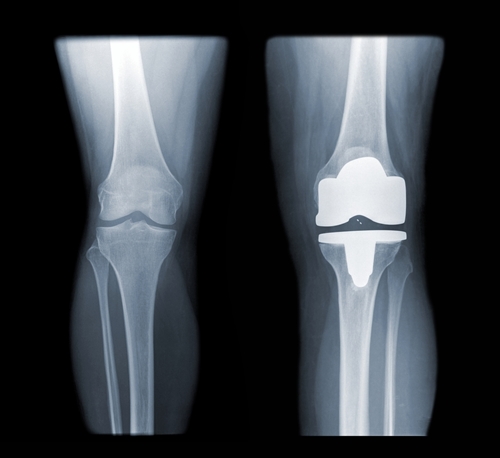Study finds new alternative for pain control after knee replacements
Knee replacements are increasingly common procedures in the U.S. According to Healthline, approximately 4.5 million Americans are living with at least one knee replacement and more than 650,000 of these procedures have occurred since 2010.
Although nine out of 10 patients experience significant pain relief, the recovery process can be very painful and take a lot of time. There have been many studies performed over the years trying to find a more successful and convenient recovery method to make knee replacements less daunting for potential patients.
New recovery method for knee replacements
A new study found a promising treatment method for patients recovering from knee replacements. The results showed that injecting a newer long-acting numbing medicine called liposomal bupivacaine into the tissue surrounding the knee during surgery could provide higher patient satisfaction and a faster recovery.
The Henry Ford Hospital of Detroit conducted the study. It included the examination of 216 patients for the first two days following their knee surgeries. The first half of the subjects were treated with the traditional pain control method, which consisted of continuous femoral nerve blockage. Numbing medicine was injected into the groin area to offset the pain coming from the main nerve that travels down the front of the knee. This method also uses a pain pump to extend the pain control to last for two days. Although it proved effective for many patients, it was found to cause leg weakness. In fact, some patients were not able to walk during their two days at the hospital.
Meanwhile, the other half of the patients received the liposomal bupivacaine injection at the site of the surgery. The outcome appeared much more beneficial to the patients, allowing them to walk comfortably almost immediately after the surgery.
The main advantage of the new injection is that it is released around the knee itself instead of the surrounding nerves and comes without any of the debilitating side effects that often result from the traditional technique.
"Function-wise, it was a lot easier for patients to move around more confidently. In the past decade, we've made major advancements in pain control for knee replacement surgery. This option is a promising, viable one for our patients," said Jason Davis, M.D., a Henry Ford West Bloomfield Hospital joint replacement surgeon and the study's senior author.
The Henry Ford Hospital study was presented recently at the American Association of Hip and Knee Surgeons meeting in Dallas and is being tested further with hopes that the new treatment will eventually be widely used for the knee surgery recovery process.
What else can patients do to relieve pain after surgery?
The first thing patients should do after a knee replacement is keep an eye out for the warning signs of infection. Although it is rare after most knee surgeries, symptoms of infection are relatively easy to detect. For example, a high fever, chills, swelling and redness around the wound and intense pain are all signs that the knee may be infected.
Blood clots are another complication that could arise after a surgery. Patients experiencing blood clots will feel pain and swelling around their calves, legs and ankles. There could also be sudden tenderness and redness surrounding the knee that is unrelated to the incision.
The American Academy of Orthopedic Surgeons also warned patients to watch closely for the onset of severe symptoms that occur in rare cases. These frequently include shortness of breath and chest pain with debilitating coughing fits. If someone begins to experience any of these conditions, he or she should contact their doctor immediately.
Preparing a home for the recovery process is crucial as well, according to the AAOS. Most people have to get around with a cane or walker for the first several days after they are discharged from the hospital, so rearranging furniture and belongings to make the space easier to move through can prevent falling or tripping. It can also be helpful to get rid of accessories like throw rugs and install grips in the shower for added support. Invest in a good chair with a high seat as well, as elevating the leg after the procedure is very important to a proper recovery.
In terms of a diet, most physicians strongly suggest that patients consume a good amount of vitamins and iron to help the knee regain strength. However, vitamin K is often avoided by those who are also taking blood thinners. Foods that contain high levels of vitamin K are broccoli, soy beans, onions and lettuce.
Perhaps one of the most essential measures to take as patients recover is to be careful about mixing medications . This includes not only the prescriptions taken for the surgery, but all over the counter drugs, vitamins and supplements, as a patient's body is particularly susceptible to blood clots and other serious medical conditions – medications they have always taken may suddenly become harmful to them.


